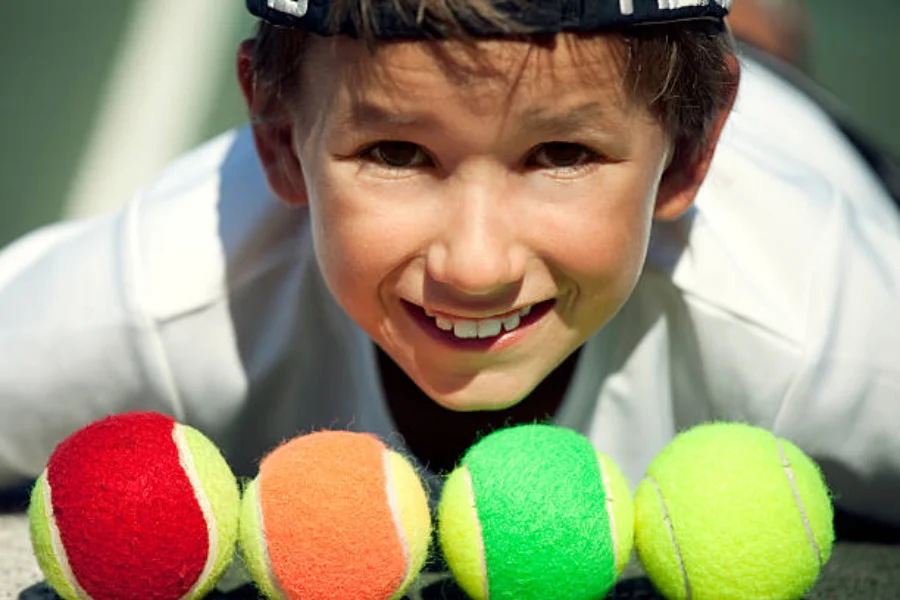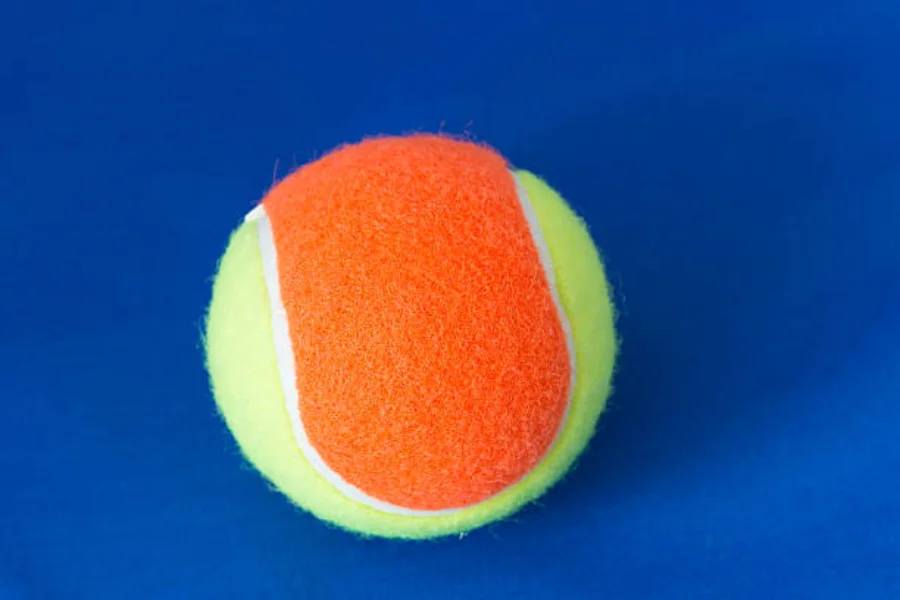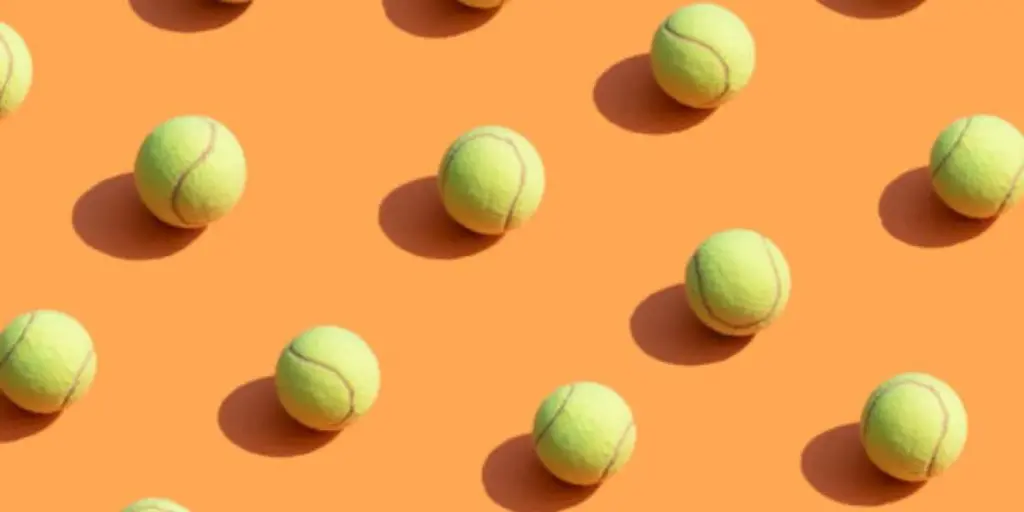At a glance tennis balls look fairly similar to one another. But that couldn’t be further from the truth. As well as different brands and their unique features, tennis balls have several characteristics to consider before purchasing them. Not all tennis balls are designed for every surface nor are they appropriate for all levels of players.
This article will look at the key differences between the various types of tennis balls and highlight which ones are suitable for certain players and circumstances.
Table of Contents
Distribution of global tennis tournaments
Considerations when choosing tennis balls
Global market value of tennis balls
Best tennis balls for training and matches
Conclusion
Distribution of global tennis tournaments
Professional tennis tournaments are spread throughout the globe in a way that allows players from different regions to participate in events that will help improve their ranking. The major Grand Slams are situated in the USA, UK, France, and Australia and throughout the year there are different tour level events taking place that players can enter based on their ranking.
Even junior tennis tournaments follow this pattern which allows for individual growth and development on a big stage. In all of these tournaments the best tennis balls are selected based on the playing surface and other key factors.
Considerations when choosing tennis balls
As stated above, not all tennis balls are made the same and there are a number of factors to take into account before making a purchase. Everything from the pressure, the felt used, and the ball type needs to be looked at in depth to ensure that the balls will be their best for the surface they’re being used on as well as for the performance of the players and coaches.
Type of ball
Consumers can often be overwhelmed when choosing the right tennis balls for them, and a big reason for this is because there are different types of balls to look at. Regular duty balls, for example, are made with a softer felt that makes them perfect for playing on softer surfaces such as clay or grass. Extra duty balls, on the other hand, are designed with durability in mind and feature a thicker felt cover to allow for less wear and tear when playing on hard courts.
Advancements in tennis ball manufacturing have even enabled brands to create high altitude balls which, as the name suggests, are designed to be used when there is lower air density without taking away from the bounce and feel of the ball when it’s hit.
Playing conditions
Depending on where the tennis is being played, consumers may want to take into account the playing conditions. Tennis balls are known to absorb moisture so places that are quite humid will require lighter balls as opposed to drier climates that require heavier balls.
For players using tennis balls at a high altitude then it’s highly recommended to use pressureless balls so that they aren’t too fast to hit. Finally, one of the most important things to take into account is the surface type. Harder surfaces require a more durable tennis ball whereas softer surfaces will use balls that have a thinner felt covering on them as they don’t wear out too quickly.
Who are the tennis balls being used by?
Having the right tennis clothing and equipment is crucial to any player and coach. What might be good for an adult to use isn’t necessarily what I child needs to help develop their game. Younger players will benefit from training tennis balls that often have very little bounce to them and are easier to hit. There are now even foam tennis balls on the market which are ideal for kids or beginners under the age of eight.
Adults have a few different tennis ball choices as well. Consumers who don’t play on a regular basis often purchase hard court tennis balls as they have a longer lifespan to them and won’t wear down from mishits or playing on public tennis courts that sometimes have uneven surfaces. More serious players and professionals should adapt to the conditions of the court that they’re playing on for optimum results so their tennis balls will be determined based on the type of court.
Pressurized vs. pressureless tennis balls
And finally – what exactly is the difference between pressurized and pressureless tennis balls? In short, a pressurized tennis ball has a hollow core that’s filled with pressurized air. The balls are sealed tightly to ensure the air doesn’t escape and are commonly used for fast paced games.
Pressureless balls will have a solid rubber core which creates a consistent bounce that isn’t lost over time like pressurized balls. They have a slower bounce as well so they’re most commonly used for training or clay court surfaces where players prefer to hit at a slower pace.
Global market value of tennis balls
Over the past decade tennis has become a significantly more accessible sport for people of all ages around the globe. Tennis is also a popular recreational sport that more people are taking part in as they look to live a healthier and more active lifestyle. Due to these factors, among others, the demand for tennis balls has increased significantly and with so many options now available for different skill levels and surfaces, that demand is only set to increase.
According to Verified Market Reports, the global market value of tennis balls is set to increase at a compound annual growth rate (CAGR) of at least 5.5% until the year 2027. That would bring the overall value to approximately USD 1.72 billion. The growth of the tennis balls industry is projected to continue far beyond 2027 as new technological advancements will allow for additional types of tennis balls to enter the market.

Best tennis balls for training and matches
Consumers now have access to any type of tennis balls that they want. Thanks to the growth of online retailers, tennis balls that aren’t available in local shops can easily be shipped to a home address or tennis club at the click of a button. But what exactly are the best tennis balls for training and matches?
Tennis balls such as foam balls, red felt tennis balls, orange felt tennis balls, green felt tennis balls, pressurized tennis balls, and pressureless tennis balls rank among the best tennis balls for players and coaches. Keep reading to learn more about each type.
Foam balls
For years the tennis world had a limited variety of tennis balls for kids to train with which severely hindered the growth of potential players and in some cases drew kids away from the sport. The industry recognized this though and introduced foam balls into the mix.
Foam tennis balls are specifically designed for training and skill development of very young players. They’re predominantly used indoors as they cause no damage or markings to the walls and surface area – and they won’t blow away in the wind. Even if the foam ball is hit hard it doesn’t go very far which is an added bonus for skill development. The foam balls are also being successfully used for rehabilitation programs due to their soft impact.
Red felt tennis balls
For children who are just beginning to play, the red felt tennis ball is the ideal ball choice. These balls are slightly larger in size than regular tennis balls which will give kids more room for error when swinging. They also have a lower compression which means players will be able to have more ball control, even if they are just starting out, as the ball will bounce slower.
Red felt tennis balls are designed to help build confidence in players since they are more likely to be able to hold a rally and will have an overall more successful shot rate. They are also designed with safety in mind as they’re less likely to cause any pain or serious damage if the player is hit somewhere on the body with them. The red felt tennis ball is one of the best types of tennis balls on the market for training younger children and introducing them to the game.
Orange felt tennis balls
Orange felt tennis balls are the next step up from red felt tennis balls. These balls are designed with a little more bounce to them, at 50% less compression than a regular tennis ball. Again, this type of tennis ball is designed for training purposes and will help players to develop their topspin as they can easily see the orange color rotating as it falls over the net.

Green felt tennis balls
Green felt tennis balls are often referred to as “transition balls”. They’re the last step on the training ball ladder before players are introduced to regular tennis balls. The green felt tennis ball has only 75% compression so although it’s still not as hard as a regular tennis ball it’s very close to the real thing and will allow players to practice with a heavier ball on court.
They’re designed for children aged 12 and up, or even beginner adults, and sometimes will have a green dot on them so players can physically see the ball spinning when they hit it. The ball will feel slightly faster when hitting it than the orange felt tennis ball which enables players to get used to the fast paced nature of hitting a regular tennis ball.

Pressurized tennis balls
Pressurized tennis balls are the most commonly used tennis balls on both the professional tour and for recreational hitting. The air compression inside the ball leads to a more lively bounce than beginner training balls and the felt cover provides control and grip when the ball hits the strings of the racquet. They’re designed to be used on all surfaces and offer a consistent bounce so players are able to hit their shots more accurately and generate power and spin.
Pressurized tennis balls do come in some variations depending on the surface they’re being used on. Extra duty tennis balls are used on hard courts predominantly as they have a thicker felt covering to ensure durability and the performance of the ball. This means the ball won’t generate a lot of fuzz or start to shed its felt.
Regular duty tennis balls are designed slightly differently, with a thinner felt cover that benefits clay or grass courts. This allows the ball to grip the surface better and for players to control the ball more. When used on hard courts the regular duty tennis balls will wear down quickly and lose their bounce and performance level.
Pressureless tennis balls
With a solid rubber core, pressureless tennis balls are ideal for training, ball machines, and even some clay court hitting. They will have a slightly different feel than pressurized tennis balls, with consumers often noting that they feel heavier to hit. That being said, their design means that they are incredibly durable and will have a lower bounce than regular tennis balls, making them perfect for consumers who like to hit at a slower pace or are just learning.
Unlike the tennis balls used on the professional tour, pressureless tennis balls can be used by any level of player as they provide a consistent hitting experience – though players may have to adapt their technique a little!
Conclusion
This guide to the best tennis balls in today’s market has covered a number of important points that should be taken into consideration before making a purchase. Factors such as the playing surface, the type of ball needed, who’s actually using the tennis balls, and whether pressurized or pressureless tennis balls are appropriate have all been looked at.
There are many different types of tennis balls now available for coaches and players to use, including foam tennis balls, red, orange, and green tennis balls used for junior training and transitioning to regular tennis balls, pressurized tennis balls for professional and recreational use, and pressureless tennis balls that are predominantly used for training or clay courts due to the difference in bounce compared to regular tennis balls.
Tennis is only set to grow in popularity as it becomes more accessible and affordable for consumers to partake in. As such, the market is expecting additional types of tennis balls to become readily available that will help with training and playing matches such as tennis balls that can track a players’ top spin speed and ball projection rate as well as balls made with a more water resistant material.




